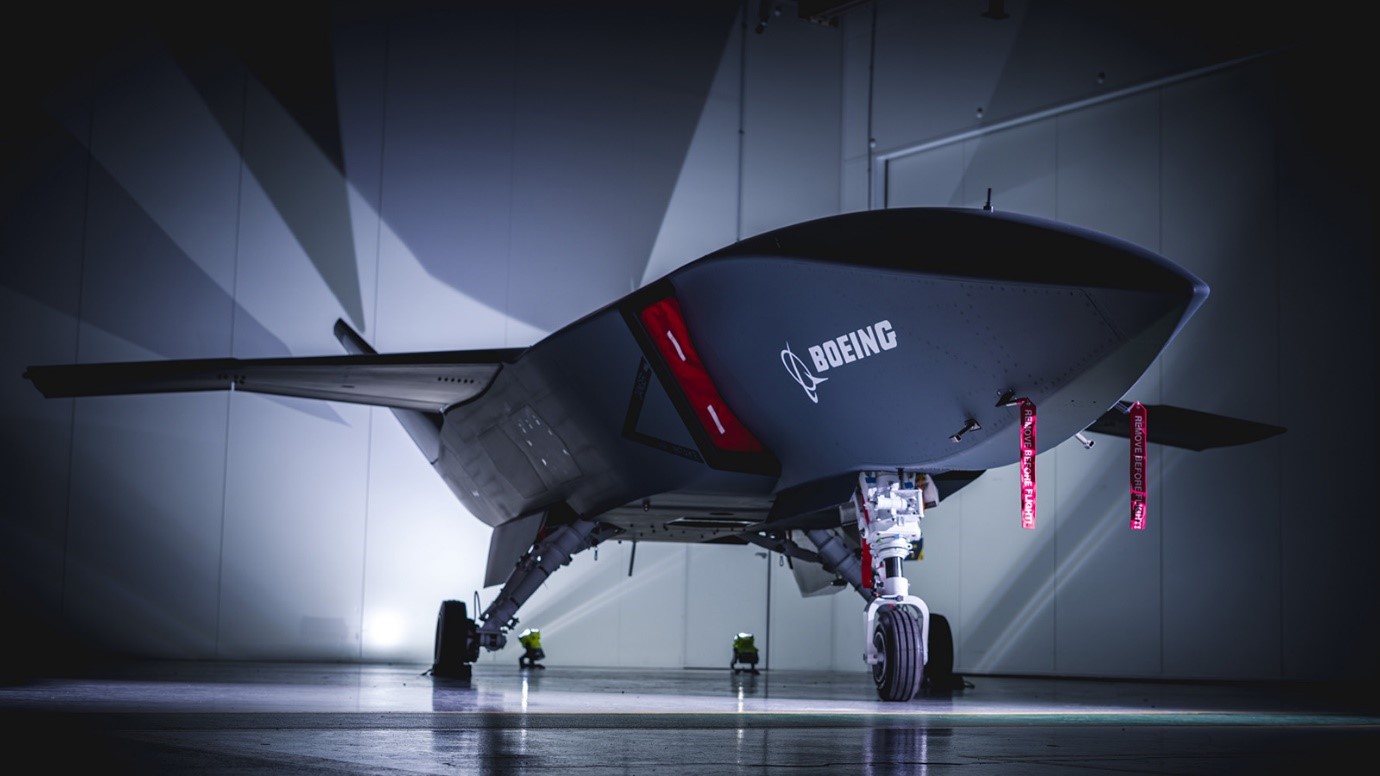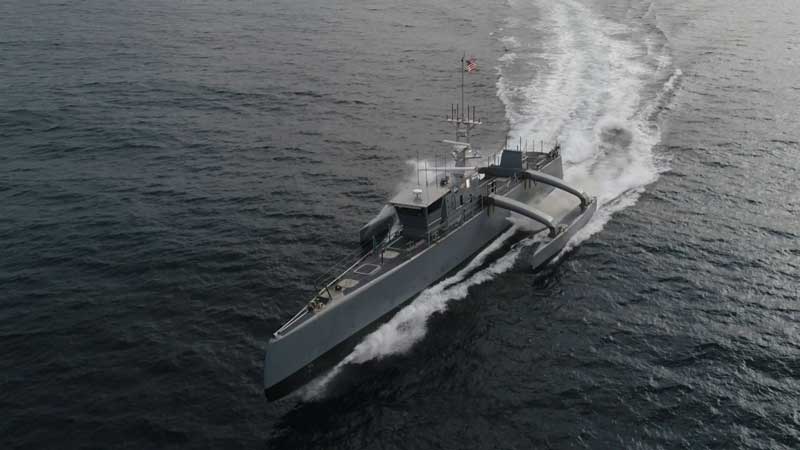Uncrewed military platforms
Armed forces are deploying a range of uncrewed vehicles at sea, on land, and in the air for activities including surveillance, logistics and warfighting. The increasing use of uncrewed systems is upending some of the basic assumptions of how military devices can operate. The Law and the Future of War research group is exploring what these changes mean for the interpretation and application of international law. This research demonstrates the flexibility of some parts of the international legal regime, which will allow existing regulation to cover the use of uncrewed devices, including those operating autonomously. Perhaps more importantly, it identifies where this might not be possible, and where the legal framework will impose requirements on the design and operation of these devices.
- What does the term uncrewed encompass?
- What is the significance of the ‘crew’ in military vehicles?
- What is the value of uncrewed vehicles?
- What sort of legal questions do these uncrewed military vehicles raise?
- Key points
- Further reading
What does the term uncrewed encompass?
Uncrewed vehicles, for our purposes, are those vehicles – whether they travel on land, at sea or in the air – who do not have any people on board managing the operation of the vehicle, including the navigation, communication, flight or passage and in the take-off, landing, departure or docking, as the case might be. Some uncrewed devices can be controlled remotely by a human operator, while others might be controlled by an autonomous system. While these vehicles may have people on board, they are not involved in the operation of the vehicle itself.
This is not the only way that these devices are referred to in the literature. There is a proliferation of different ways of labelling to this technology, and multiple terms are often used interchangeably. The most prominent way of referring to the lack of people on board is by calling these devices ‘unmanned’. Accordingly, many writers use the terms ‘unmanned aerial vehicles’ (UAVs) or ‘unmanned maritime vehicles’ (UMVs). With regard to UAVs that are directly controlled by an operator from a distance, the label ‘remotely piloted aircraft’ (RPA) carries more precision, making it the preferred term for many armed forces. Military UAVs, especially when weaponised, are often also called ‘unmanned combat aerial vehicles’ (UCAVs). Importantly, the devices in question form part of a broader system that also includes supporting control infrastructure (ground environments, communication systems, training, manpower, logistics, and so on). The terms ‘unmanned aircraft systems’ (UAS), ‘remotely piloted aircraft systems’ (RPAS) or ‘unmanned maritime systems’ (UMS) are used to emphasise this point.
We prefer to use the word ‘uncrewed’ to refer to the lack of people in piloting and crewing roles on board for two reasons. First, gender considerations are important. As a paper submitted by Canadian delegation to the International Civil Aviation Organisation in 2018 noted, the ‘term “unmanned” (or conversely, “manned”) holds strong gender connotations, namely, that this is a male space.’ It is better to use a term reflecting that the people not onboard the device could be people of any gender.
Second, using the word ‘uncrewed’ acknowledges that a device may be remotely controlled or operate autonomously and still be carrying people. Uncrewed devices are likely to be increasingly used to support military operations, including transporting people. For example, in the future, States are likely to employ uncrewed medical evacuation vehicles as military medical aircraft.
As ‘uncrewed devices’ can refer both to remotely controlled or autonomous systems, it is important to be precise about how the system is being controlled. The application of the legal regime to remotely controlled devices is substantially more straightforward than when applied to a device operating with a high degree of autonomy.

What is the significance of the ‘crew’ in military vehicles?
International law establishes which vehicles amount to ‘warships’ and ‘military aircraft’. The relevant requirements were first codified in the early 20th century – specifically, in the 1907 Hague Convention (VII) Relative to the Conversion of Merchant Ships into War Ships and the 1923 Hague Rules of Aerial Warfare. More recent instruments, such as the 1982 United Nations Convention on the Law of the Sea (UNCLOS), elaborate on this legal regime.
International law requires warships and military aircraft to be ‘under the command’ of a member of the armed forces of a State (see Hague Rules, article XIV; UNCLOS, article 29; compare Hague Convention VII, article 3). With respect to warships, that service member must be a commissioned officer and the ship must be ‘manned by a crew which is under regular armed forces discipline’ (UNCLOS, article 29).
Do these legal definitions allow for uncrewed military vehicles? With military vessels capable of operating without a crew on-board increasingly becoming common it is certainly arguable that some of the criteria used to determine the nature of a vessel as a military vessel are, today, no longer as significant. As warships and military aircraft without crew on board become more and more common, what it means to be ‘manned by a crew’ for a military vessel or aircraft will ultimately be clarified through developing state practice.
What is the value of uncrewed vehicles?
Uncrewed military vehicles, including those with some capacity for autonomous operation, may be very helpful in the achievement of a range of military objectives. The rapid adoption of remotely piloted uncrewed aerial systems demonstrates their usefulness: they are already used by many States for long term surveillance and the application of force in contested areas. The use of uncrewed aerial systems for targeting killing by several states is the most prominent, and controversial, example of this. As they become more sophisticated, militaries are likely to use them for more advanced surveillance and other covert operations, to assist with all forms of warfighting, and to improve logistics. As has often been said, they will be perfect for dull, dirty and dangerous work.
The range of uncrewed devices currently in development is very wide. The range of uncrewed maritime vehicles provides a good example of this. At the larger end of the scale one finds a submarine-hunting uncrewed maritime vehicle named ‘Sea Hunter’. It is 40m long, can travel up to 27 knots, and is designed to detect and track enemy submarines. The prototype Sea Hunter successfully sailed from San Diego to Hawaii and back without any crew in 2019. Uncrewed devices can also be slow and small: Liquid Robotics’ Wave Gliders are just over 3m long and travel at a leisurely 1.3 knots. They can be used for surveillance, monitoring, or as a communication gateway.

What sort of legal questions do these uncrewed military vehicles raise?
Some of the legal issues raised by uncrewed military vehicles concern the basic definitions of the legal regime that operate as a gateway into the regulatory system. For example, most of the rights and obligations set out in the UNCLOS only apply to the operation of ‘ships’ and ‘vessels’. The aviation legal regime applies to ‘aircraft’. But is an uncrewed watercraft a ship or vessel, or is it something else? Are uncrewed aerial craft ‘aircraft’ under the civil aviation framework and the Hague Rules of Aerial Warfare? Our research has considered what the terms ‘ship’, ‘vessel’ and ‘aircraft’ encompass, and addresses the consequences of an uncrewed device falling within, or outside, these categories.
Another example comes from the restrictions of what devices have access to belligerent rights and are therefore allowed to carry out attacks. If a military vehicle is to exercise the belligerent rights afforded to its classification then those responsible for its operation must be able to comply with their obligations under international law. For example, a military aircraft must be able to comply with the order of a summons to land. Whether autonomous capabilities allow this must be factored into the design of future systems.
Domestic law also raises a range of questions such as whether uncrewed vehicles can comply with existing laws pertaining to safety (workplace health and safety as well as aviation and maritime safety), privacy and the environment.
Key points
- Uncrewed vehicles are vehicles not operated by a crew on board the device. They can be remotely controlled or operated by an autonomous system, or by a mix of remote control and autonomy.
- While many different terms are used to refer to these devices, we prefer ‘uncrewed’ because it is gender neutral.
- The use by militaries of uncrewed devices has rapidly increased in recent years, and the investments states are making in the technology means it is very likely to continue to increase.
- The significance in international law of having a crew onboard the device is contested, and they give rise to a range of different legal questions.
Further reading
Ian Henderson and Bryan Cavanagh, ‘Unmanned Aerial Vehicles: Do They Pose Legal Challenges?’ in Hitoshi Nasu and Rob McLaughlin (eds), New Technologies and the Law of Armed Conflict (Asser Press, 2013) 198
Natalie Klein, ‘Maritime Autonomous Vehicles within the International Law Framework to Enhance Maritime Security’ (2019) 95 International Law Studies 244
Natalie Klein, Douglas Guilfoyle, Saiful Karim and Rob McLaughlin, ‘Maritime Autonomous Vehicles: New Frontiers in the Law of the Sea’ (2020) 69 International and Comparative Law Quarterly 719.
Bradley Martin, Danielle C Tarraf, Thomas C Whitmore, Jacob DeWeese, Cedric Kenney, Jon Schmid and Paul DeLuca, Advancing Autonomous Systems: An Analysis of Current and Future Technology for Unmanned Maritime Vehicles (RAND Corporation, 2019)
Andrew Norris, Legal Issues Relating to Unmanned Maritime Systems (US Naval War College, 2013.
Kris Osborn, ‘Meet the U.S. Navy’s Sea Hunter Drone: The Robot Ship That Will Hunt Submarines’, The National Interest (14 July 2020)
David Pinion, ‘The Navy and Marine Corps Need to Prepare for the Swarm of the Future’, War on the Rocks (Blog Post, 28 March 2018)
Michael N Schmitt and David S Goddard, ‘International Law and the Military Use of Unmanned Maritime Systems’ (2016) 98 International Review of the Red Cross 567
Robert Veal, Michael Tsimplis and Andrew Serdy, ‘The Legal Status and Operation of Unmanned Maritime Vehicles’ (2019) 50(1) Ocean Development & International Law 23.
Other resources
Bureau of Investigative Journalism, Drone Warfare (Website)
International Maritime Organization, Autonomous Shipping (Website)
Version 1.0 | 2 October 2020
UQ Law research
Connect with our researchers
Collaborate with us to solve today's pressing challenges. Find out how we can work together.
Find a researcher by name
Find researchers by research area
Research themes & challenges
Potential HDR projects
Summer/Winter research scholarships
What's on
Research groups
Australian Centre for Private Law
Centre for Public, International and Comparative Law
Food Security and Intellectual Property
Indigenous People and the Law
Law and the Future of War
Law and Religion in the Asia-Pacific
Law, Science and Technology
Marine and Shipping Law Unit
UQ Solomon Islands Partnership
